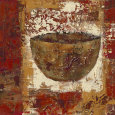http://dashes.com/anil/2008/12/spreadsheet-art-revisited.html
There is even a book on the topic. It’s written by Danielle Aubert, who is an American artist and graphic designer based in Detroit. The book is titled “16 Months Worth of Drawing Exercises in Microsoft Excel.”
.
Needless to say that roused my curiosity.
Spreadsheet art?
What’s that?
|
Spreadsheet art is done by using color to block in the cells in the spreadsheet.
Now why didn’t I think of that before?
An 18-600 cell spreadsheet mosaic was created by four persons working simultaneously on a Google spreadsheet. There are 100 rows and 215 columns in a Google spreadsheet.
There is a time lapse video(and behind the scenes footage) documenting the whole process, available at http://www.google.com/google-d-s/holiday08.html.
This site also lets you use the original Google spreadsheet used in the video to create your own spreadsheet art, free of charge.
It also gives you instructions on how to go about creating your own, unique spreadsheet art.
When you’re finished, do share your work there or post it on YouTube so others can see and enjoy!
You can see more of Danielle Aubert’s spreadsheet art here http://danielleaubert.com/home/exceldrawings/index.htm
You may also like these articles:
Movies 2011-Upcoming Movies in Theaters
The Curiosity Killed The Cat


